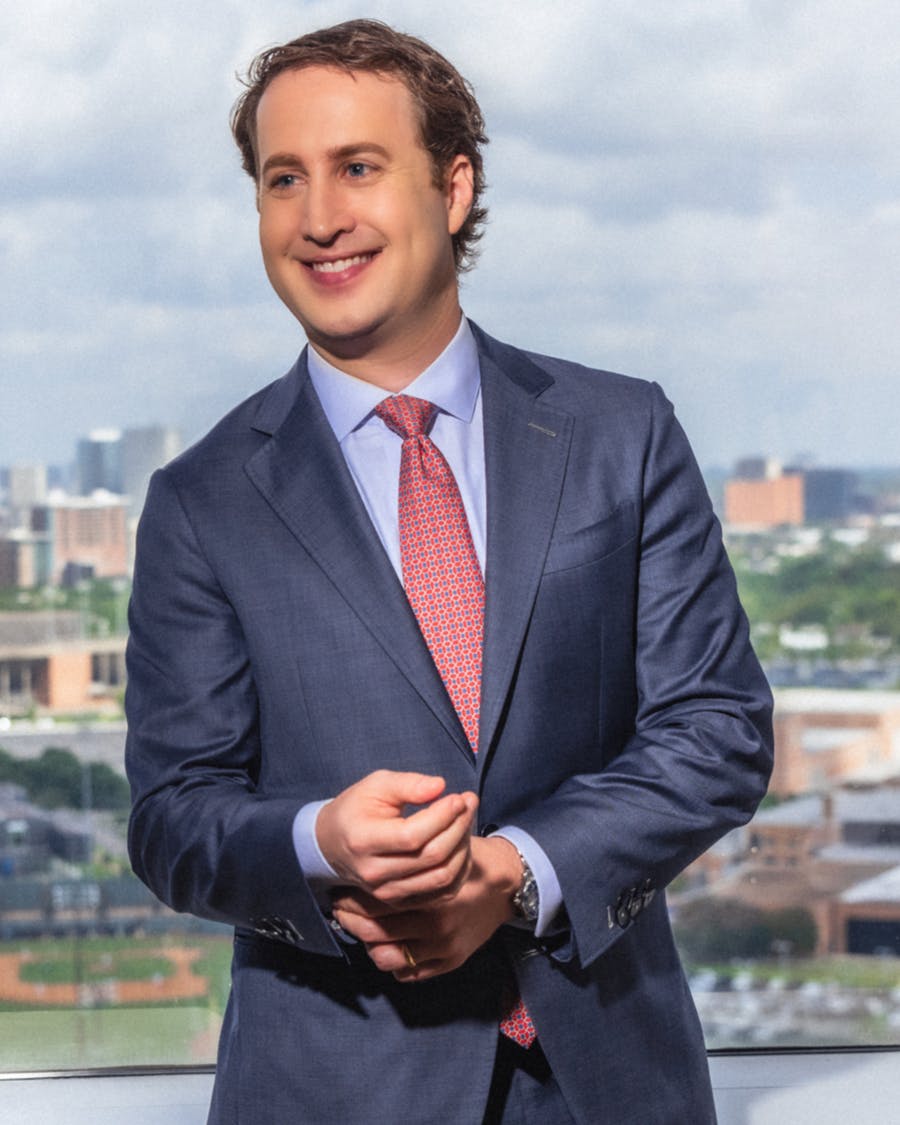Achieve Lasting Youthfulness with a Deep Plane Facelift in Houston
While traditional facelift surgery is arguably the best way to address facial aging, the deep plane technique is the most effective as it achieves tighter, more elastic skin and defines the features. This type of facelift leaves the skin firmer, smoothes wrinkles away, contours the jawline, and more youthfully refines the facial features.
Triple board-certified Houston plastic surgeon Dr. Michael Eisemann and his son, fellowship-trained plastic surgeon Dr. Bradley Eisemann, perform deep plane facelifts in Houston. They will help you achieve your dream of a naturally refreshed and youthful look.
How is a deep plane facelift different from a SMAS facelift?
Both facelift techniques address the Superficial Musculoaponeurotic System (SMAS). This network of connective tissue runs under the skin but over the facial muscles to form the face’s framework. Tightening the SMAS produces significant and long-lasting facial rejuvenation results. However, there are critical differences in how the SMAS is lifted during a traditional facelift versus a deep plane facelift.
A SMAS facelift pulls and stretches the SMAS layer using stitches to perform the facelift. Pulling or overly stretching this layer can produce the overdone or “pulled” appearance that patients want to avoid.
Alternatively, the deep plane facelift elevates the SMAS from the muscles underneath and releases the ligaments that anchor the SMAS near the folds around the mouth. As a result, the SMAS is “lifted” without tension rather than “pulled” as with a SMAS facelift.
Here are some other ways in which the two facelift techniques differ.
SMAS Facelift
The SMAS facelift expertly addresses the muscle and soft tissue closer to the ear, where the incisions are. However, it does not address the jowls or the folds around the mouth as effectively as a deep plane facelift.
During a SMAS facelift, four deep ligaments anchor the lifted muscle and connective tissue layer down to the face. These ligaments continue to hold down and anchor the forward part of the jowls and mouth folds.
Because the SMAS facelift is superficial, the results only last for a short time as those from a deep plane facelift. SMAS recovery is longer than the deep plane facelift recovery period, while the deep plane facelift appears more natural.
Deep Plane Facelift
The deep plane facelift uses similar incisions to a SMAS facelift. However, it releases and lifts the deeper muscles and connective tissues of the face near the jowls and folds around the mouth. The deep plane lift begins from the back of the jawline up to the corner of the eye, where the soft tissue is prone to sagging.
Additionally, a deep plane facelift releases the four ligaments anchoring the muscle and connective tissue, allowing the face to be resuspended for more natural results. While the SMAS facelift can be considered “stretching” the face because the ligaments continue anchoring, the deep plane facelift is an actual anatomical “lift” and redraping.
A deep plane facelift lasts longer than the SMAS facelift, providing noticeable improvement for up to fifteen years. The deep plane facelift recovery time is shorter than the SMAS recovery period, and the rejuvenating results appear more natural.
The Changing Landscape of the Face, How does a Face Age
Facial aging is not caused by one single factor but rather a combination of changes that occur over time. In addition to skin laxity, we lose volume in key areas such as the cheeks and temples, while fat pads shift downward. This redistribution can hollow the eyes, flatten the midface, and create deeper folds around the nose and mouth. Skin also becomes thinner, drier, and less resilient, amplifying fine lines and uneven texture.
For patients seeking a facelift in Houston or a deep plane facelift, Dr. Mentz carefully evaluates these changes to design an approach that not only repositions sagging tissue but also restores youthful fullness and smooths the skin’s contours, ensuring a refreshed look that still feels authentically you.

Am I a candidate for a deep plane facelift?
Younger patients may benefit from a deep plane facelift in Houston. However, the ideal candidate is an older person experiencing severe skin laxity, especially in the jaw and neck region, who would like to achieve a more youthful appearance.
Deep plane facelift candidates should meet the following requirements:
- Are in good health generally and have no severe medical conditions
- Do not smoke
- Have facial or neck skin laxity or sagging
- Have prominent jowls
- Are unhappy with a double chin or a poorly defined jawline
- Have sunken cheeks or other facial areas due to lost facial volume

What are the benefits of a deep plane facelift?
For the right candidate, a deep plane facelift provides exceptional results and benefits, including the following:
- Less skin trauma than other techniques
- More excellent definition of the jawline, neck, and cheekbones
- Reduced chance of needing revision procedures
- More natural results than traditional facelift techniques
- Reduced scarring
- Restores volume to your cheeks
- Smoother skin due to a boost in circulation
- Can correct eye drooping
- Nearly undetectable incisions which heal quickly
- Boosted confidence and self-image
- Lifts and firms more severely aging skin to rejuvenate a youthful appearance
- Eliminates or removes jowls, or a double chin
- Tightens the skin
- Can turn back the clock as much as ten years
- Lifts the brow and opens the eyes for a more open appearance
- Smooths wrinkles and heavy lines

The deep plane facelift procedure
Before your deep plane facelift, Drs. Eisemann discusses your facial concerns and aesthetic goals while evaluating the extent of skin laxity.
To prepare for your procedure, you should:
- Stop smoking
- Stop taking any medications, vitamins, or supplements that thin the blood
- Prepare what you'll need available at home while you heal
During your deep plane facelift, incisions are made in the hairline and around the ear to tighten and secure the layer of connective tissue and underlying muscles beneath the skin. Drs. Eisemann will release the deeper ligaments to lift and rejuvenate the skin while repositioning the muscle layer and tissues. The incisions are closed, and you’ll begin your recovery.
Recovery from a deep plane facelift
The deep-plane technique allows the skin and muscle to remain attached to the underlying structures, causing less trauma than the SMAS facelift for a shorter recovery time. Here is what you can expect during recovery from a deep plane facelift.
The First Days Post-Op
- After your procedure, you can return home with a designated friend or family member
- For the next two days, apply cold packs around your face and neck to help reduce swelling
- You’ll need to sleep with your back and head elevated at 45-60 degrees
- If drains were placed, Drs. Eisemann might remove them after the first few days
- After two days, you may shower and wash your hair, even if the drains are still in place
Week One
- You should primarily be resting and recuperating during this time, but be sure also to walk around to keep your circulation active and promote healing
- Continue sleeping with your back and head elevated at 45-60 degrees
- While swelling will increase up to the fourth day after your surgery, it begins to subside after
- Do not drive until you feel comfortable and can perform your usual driving functions, generally around one-week post-op
- After the first week, you can apply cosmetics
Week Two
- Residual bruising and swelling will significantly improve
- Patients generally take approximately ten days before they are comfortable going out in public
- At this point, you should be feeling much better and can return to light work and activities
Week Three
- After the third week, you may resume moderate exercise
- There will be a marked improvement in swelling and bruising after the third-week
Weeks Four Through Six
- Most patients are cleared to resume strenuous activities during this time, as healing is likely complete at this point
Why choose the Eisemann Plastic Surgery Center for a deep plane facelift in Houston?
When you choose us for your deep plane facelift, you choose over thirty years of combined surgical experience and excellence. That is one of the best ways to ensure facelift results that look naturally youthful, not overdone or artificial.
Dr. Michael Eisemann is board-certified by the American Board of Plastic Surgery, the American Board of Facial Plastic and Reconstructive Surgery, and the American Board of Otolaryngology-Head and Neck Surgery. As such, he has achieved a nearly peerless reputation for aesthetic excellence. He also served as an Assistant Clinical Professor in Plastic Surgery at Baylor College of Medicine and Weill Cornell Medical School and the Assistant Clinical Professor of Otolaryngology at the University of Texas Medical School in Houston. His thorough training, artistry, and compassion allow Dr. Eisemann to exceed your expectations for success.
Dr. Bradley Eisemann is a board-certified, fellowship-trained plastic and reconstructive surgeon with impressive experience and precision. He has performed complex aesthetic procedures, such as the deep plane facelift, under the direction of some of the world’s most highly-regarded pioneers. Dr. Eisemann is focused on delivering outstanding patient-centered care and helping all who cross his path live their best lives and love how they look. Facelift Houston patients turn to Cosmetic Surgery Houston to fulfill their needs and achieve their personal aesthetic goals.


